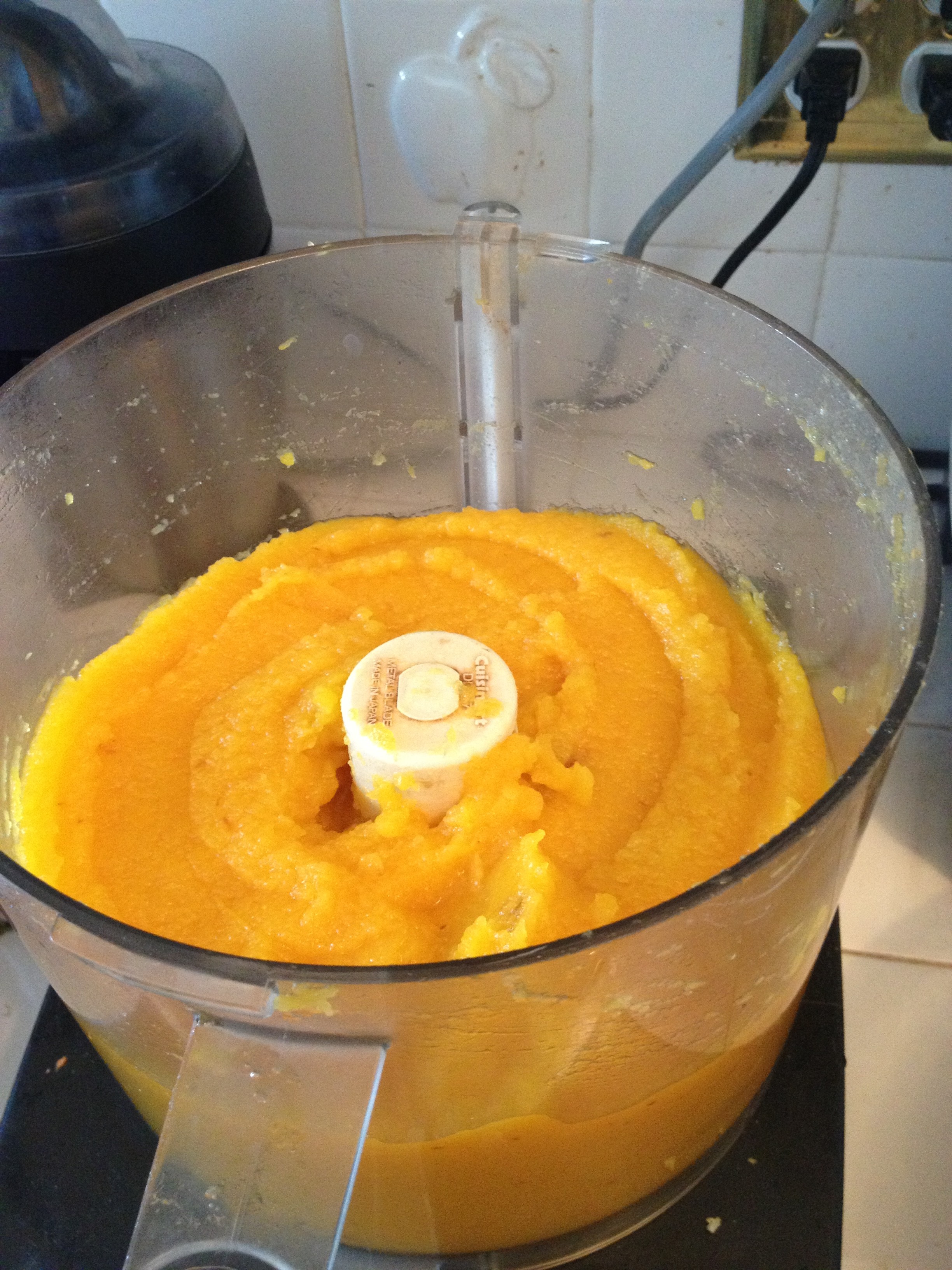For many of my younger years, I always used canned pumpkin in my fall desserts. It's one of the better canned products you can buy (i.e., most brands have nothing added) and organic varieties readily abound, but it turns out much of it is not purely pumpkin (many manufacturers add butternut squash and other winter squash into their products). After the first time I pureed a pumpkin from scratch, I swore I would never use a can again...and I haven't since! Not only is the process relatively easy, you get the added bonus of pumpkin seeds to roast and snack on!
Peruse the Internet and you'll find many ways to prepare pumpkins for pureeing. Some people boil the pumpkin, but I swear by roasting. I prefer the flavor and consistency of roasted pumpkin puree, and there's less knifework involved than if you butcher up a pumpkin in pieces that will fit into a pot. Be sure that the pumpkin you use are good edible varieties (i.e., not jack o'lantern pumpkins) and often I find that bigger is not better when it comes to pumpkins. I suggest getting two smaller pumpkins versus one large gourd. And be sure to select pumpkins that sit stably (i.e., aren't tilted or misshapen) to assist in cutting.
Here's my favorite method for preparing puree:
Preheat your oven to 400 degrees.
Set pumpkin on a cutting surface. Use a sharp knife to make cuts around the stem of the pumpkin, then use your fingers to pop the stem out.
Cut the pumpkin in half (through the stem end). If you've selected a relatively flat-bottomed, stable pumpkin, this will be a breeze.
Use a spoon to scoop out the seeds and excess pulp. Drag the surface of the spoon along the pulpy regions of the inner pumpkin firmly to remove stubborn stringy pulp. Save the seeds to roast later.
Place pumpkin halves face down on parchment lined baking trays. Bake for 40-50 minutes, until the pumpkin can easily be pierced with a fork in the thickest regions.
Take the trays out of the oven, and slip the pumpkin halves onto their backs (i.e., cut side up) to let out excess heat and steam that's built up during baking. Let the pumpkin cool for about an hour.
When pumpkin is cool, use a spoon to scrape the flesh away from the skin. Place flesh in a food processor, and discard skin.
Process pumpkin until it is well homogenized. This step takes a little patience, and likely will involve stopping the machine and scraping the food processor bowl down from time to time. Resists the urge to add water to speed up the process. I've never found this to be necessary, and you'll end up needing to drain out excess water later on.
Once the puree is finished, you can assess how watery it is. Some pumpkins are naturally less dry than others. It's fine to use puree with a bit of moisture in it, but if your pumpkin is super watery, you'll want to take care of it. To remove any excess water, place puree in a fine mesh sieve and let it sit for 10-15 minutes. Place something beneath it to catch the orange water that will trickle out. (I like to then use this in a smoothie.)
Use the finished puree in any recipes that call for either canned pumpkin or pumpkin puree. It will store about a week in the refrigerator, so it can be made in advance of your pies and other creations. I've heard it freezes well for up to a couple months, but it's never lasted long enough in my kitchen to try this out.
Enjoy! And please take a second to let me know in the comments below how you're using your pureed pumpkin!



